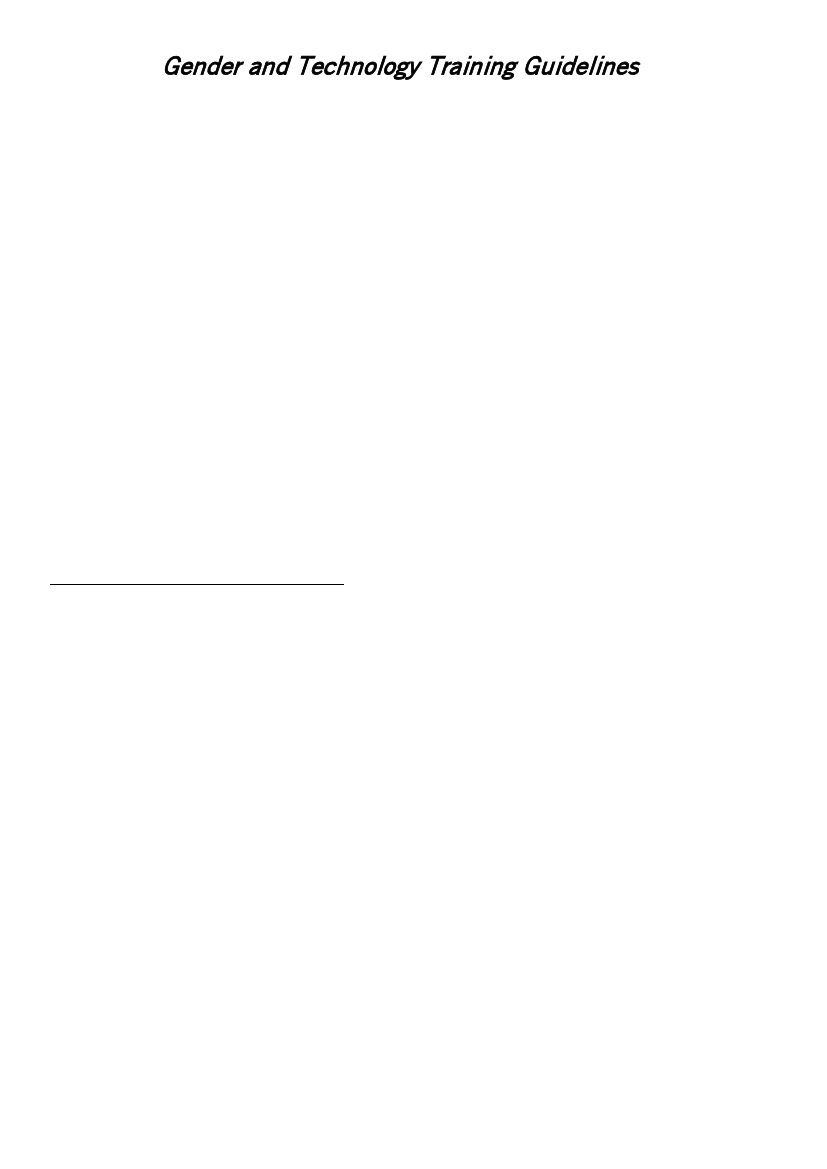
Gender and Technology Training Guidelines
STEP 2 - ACCESS AND CONTROL DIAGNOSIS
In designing a project for implementation, identifying gender-specific activities is not
enough. Project design needs to take into account women and men’s access and
control to resources and the flow of benefits from project activities to women and
men.
First. identify who has access to and control over the following resources and the
benefits from these resources. (Remember, access to resources does not necessarily
imply control over them.)
Land
Capital
Labour
Skills/technologies
Education
Credit/savings
Information
Political power
Go back to the exercise that discussed these issues for further explanation.
Key issues for technological intervention
Do women and men have equal access to the resources required for the use of
the technology?
Who controls these resources? How will this affect the project?
Can the current patterns of control be changed?
Do women and men have equal access to the skills and training required for
the use of the technology? Can women benefit from the training the project
provides?
Do women own land? Does this affect the project?
Do women have access to credit? What implications does this have for
the project?
Who are the decision makers in the village? Will this affect the implementation
of the project activities? Can women be involved in and contribute towards
project activities?
How has information about the project been shared in the community? Are
women and men both aware of the proposed intervention and activities? What
are the attitudes towards the project?
Will women both benefit from the technological intervention? If yes, how? If
no, why not?
Will the project affect women’s existing access and control over
resources?
84